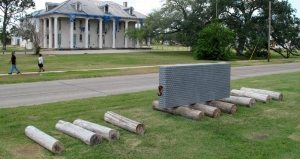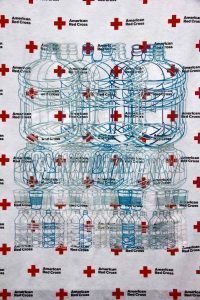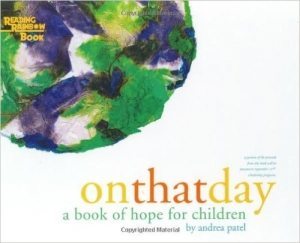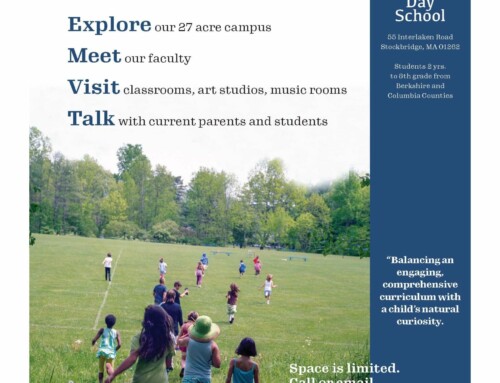We were near the end of the second week of school, and my fourth-grade class had settled into the easy camaraderie that came with our having gotten to know each other and starting to feel comfortable with the procedures that would guide our academic year together. As I wound my way through desk groupings to guide puzzled mathemagicians towards solutions for the daily challenge problem or gently to redirect students struggling to diagram our SOD (sentence of the day), Carol, one of my two fourth-grade colleagues, burst breathlessly into the room. “Turn on the news,” she barked. “You have to see this!”
That year and the year before, Carol’s class had had a first-period special. So it wasn’t unusual for her to have been watching the news while her kids were out of the room and then to come down the hall to share a tidbit that could be woven into our daily lesson plans. But this time felt different.
In the back of my room was a state-of-the art Gateway Destination computer system that– among its many amazing capabilities– could serve as a big-screen television. So while Carol looked anxiously on, I switched on a local news channel… just in time to see a streak of a jet plane across a crystalline blue sky already interrupted by roiling black clouds. I watched confusedly, trying to process why the plane was flying so close to– no, was actually flying into– the second of the two magnificent pillars rising alongside the Hudson River. I listened without hearing while the television announcer explained the scene in disbelieving, disjointed fragments over the background noise of cries and gasps and wails and screams.
Without knowing quite how or when it happened, I was sitting on the floor, surrounded by Carol and my kids, all of us holding hands and leaning both against one another and towards the Gateway big-screen monitor. There wasn’t a sound in the room except what was coming from the television as we watched what I sensed was a great American tragedy unfold right in front of our eyes.
Although I didn’t know it then, I used the fancy wireless remote control to turn the Destination system off just as another plane was readying itself to fly down into the heart of Washington, DC.
After a few minutes of complete stillness, the kids all began to talk at once. “Who?” they asked, and “Why?” Obviously I had no answers for them. From those nine and ten-year-olds, I was hearing the same myriad of emotions I felt. Shock, horror, anger, sadness, disbelief, fright. But then I heard more. I listened to first responses of retaliation and second thoughts of reconciliation. I heard helplessness begin to turn to what-can-we-do’s. I heard about how things need to change, and promises to be the generation that will change them. I heard talk of the whole wide world, not us against them.
I heard a little boy remind me, “You told us that in fourth grade we are going to study all about the world in social studies. That’s good, because we need to learn how people are different so we can all just get along.”
What is that old adage? “Out of the mouths of babes?”
Flash forward fourteen years to this past Friday, September 11, 2015, the first of our Berkshire Country Day School PK-9 assemblies. At the end of the day, the Bigs were to pick up their Littles and bring them to the Furey Music Room where we would gather, celebrate the end of our first week of school, announce happenings and birthdays, and– as it was planned– use the book, Goodnight iPad, to talk about our shared value of creativity.
Except that, on my drive to school, I heard this story on NPR.
“Hmmmm,” I thought. I might need to rethink things.
Then, at carpool, a parent reminded me that, if 9/11 is a difficult day for folks in general, public servants like police and fire-fighters really struggle with it. This parent (who is also a volunteer fire-fighter, herself) suggested that– if the students wanted to write letters or draw pictures– she would deliver them to local stations and precincts.
Soon after that, I mentioned the NPR podcast above to one of our teachers. Her response was immediate, poignant, and tearful. “I went to school right across the river from the Towers,” she sighed. “I used to look out of my classroom window every day and I saw them. This is a hard day for me.”
That did it. It was onto Plan B for our assembly.
I won’t recap the entire gathering except to say that, as I told the once-upon-a-time version of the Christopher Saucedo story, you could have heard a pin drop, even given the three to sixteen-year-old age mix of the audience. Some of the older kids nodded sadly as the story unfolded, knowing what was coming as I referred to the “Twin Towers” and “N’Awlins” and “beachfront property near New York.” Two-thirds of the way through, a lower-schooler blurted out, “Wait! Wait! Is this a true story?!?” But when I got to the end, the part where Christopher used his gifts and talents to respond to his Job-like life with creativity and hope, there were smiles.
“Raise your hand if you’ve ever had a bad thing happen to you?” I said. Hands shot up every where.
“How many of you have ever been really sad or discouraged?” I asked. “Nod your head yes.” Heads bobbled all across the room.
“How do we respond?” I asked. “Do we get mad or sad and stay that way? Or do we try to work through disappointment or anger and move forward with our lives?”
“Look at this,” I said, sweeping this image from side to side. “You heard about how Christopher usually used metal and heavy objects to make his art. But this sculpture is different. It’s blue like the sky and white and light like clouds and celebrates the beauty of the Towers and the spirit of everyone who helped.” The students nodded and cheered.
“And this,” I followed. “After Katrina there were hundreds of people who traveled south to help clean up and move junk and rebuild. Doesn’t this make you think about how communities can help others move forward in strong and positive ways when something goes wrong?” More somber nods and “uh-huhs.”

“Now, check out this blanket,” I said, sharing the next picture. “Can you see what is embroidered all over it? Bleach bottles and containers of water, the things that the Red Cross handed out right after Superstorm Sandy? Look at how Christopher used his art here to thank people who helped.” A soft chorus of “Wow” and “Whoa!” “That’s a blanket?!?” erupted.
The kids and I talked about bad things and how they make us feel. I mused aloud about how easy it would have been– expected even– for Christopher to have given up into sadness after just one of tragedies in his life, much less after all three. But, instead, with the support of his community, he responded with creativity and resilience. His artwork reminds us all that, if we have each other, we have hope.
Finally I held up a copy of On That Day, the picture book authored by our very own Andrea Patel. “Just like Christopher, Mrs. Patel used her art to help her and us try to deal with bad things like 9/11. She turned her sadness into beautiful tissue-paper pictures and used the power of words to inspire people just like us to help one another, to be kind, to work towards understanding, and to be thankful for the people sharing our world.”
I finished the assembly with a request. Although this weekend is meant to be homework free (in honor of Rosh Hashanah on Monday), I asked the kids to consider doing something anyway. I’d like for them to use Christopher’s story as inspiration and make something, themselves, that honors hope and humanity. I asked that they think about something that like to do– sing, dance, paint, play, build, write– to make art. Then, I wanted them to create something and bring it to school next week. The teachers and the volunteer fire-fighting parent and I will share their pieces with our community helpers who help us in so many ways.
I can’t wait to see what our kids will come up with.
post-script…
The story with which I started this blog is, of course, my “where-were-you-when” testimonial. But what I haven’t mentioned yet is that– about five minutes after I shut down my Gateway Destination that morning– my LS Head appeared at my classroom door. In a hushed tone, he made sure I knew what was going on in the outside world and then told me that he had decided we would not share anything about the planes or the Towers or the crashes with our lower-school kids. Instead, we would let the parents do so at their own discretion after school. As Carol looked on guiltily and my students sat in a tight circle in the back of the room and continued earnest consultations about people and good versus evil and cross-cultural disconnects, I had to admit to him that his exhortations were a little too late.
Throughout that afternoon, as parents left work and came to pick up their children to take them home and keep them close, I sat with each and told them how the students and I had watched and processed and talked and supported. And then the parents and I did the same.
Our inclinations as teachers and parents are often similar to that of my 9/11 Head of Lower School. We want to protect our kids from harm, shelter them from trouble, shield them from failure, ensure that they are always happy and healthy and successful. But, looking back, if I had the happenings of that bright blue September day fourteen years ago to do all over again, I might choose to respond exactly as I did then, in a classroom community quite literally leaning on one other to work through the real stuff — even the really hard stuff– that happens in this variously wonderful world.
Who among us cannot testify that life is beautiful? But, don’t we understand that it can also be tragic or cruel? Try as we might, any endeavor has equal probability of success or failure. So it’s an imperative that we provide kids with supported opportunities to confront the difficult while we offer them models about how to respond with creativity, resilience, confidence, generosity, and gratitude.
Over the next week, hug your kids. A lot. Then, if you get the chance, I hope that you’ll work with them to find that special way they can create something– a picture, a poem, a woven bracelet, a sculpture, a musical recording, a photo– that captures hope. That inspires. That portrays thanks. Send it to school by next Friday, September 18 and we’ll make sure it gets to a local firefighter, a policeman, or another community helper. Together, we will embody our shared values of creativity and community and the incredible strength of enduring human spirit.
As Andrea Patel so eloquently wrote,
Sometimes bad things happen in the world.
But there will always be good things in the world, too.
You are one of those good things.




